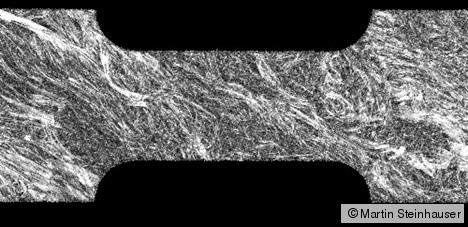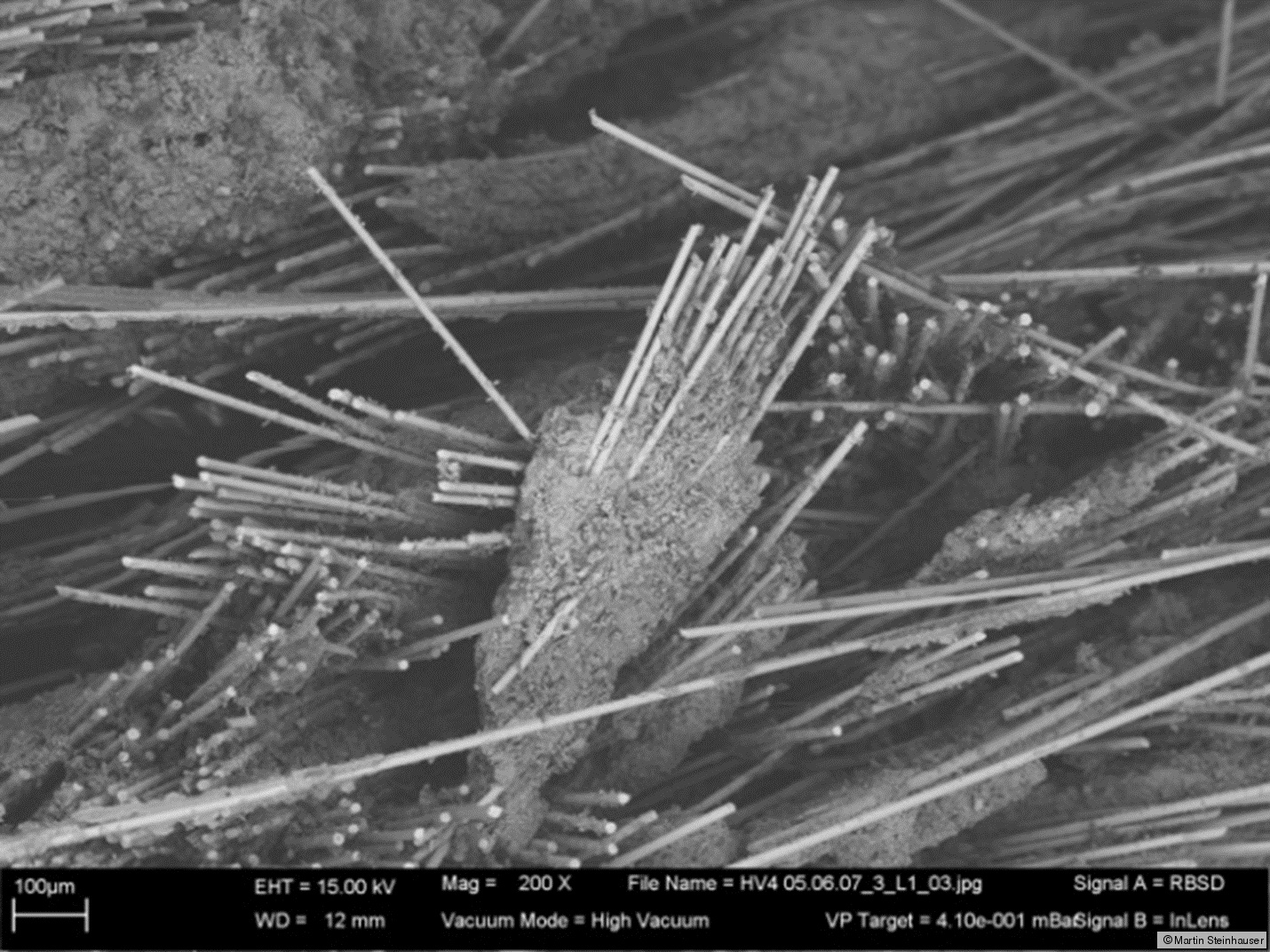The macroscopic properties of materials are strongly determined by the microstructure of the materials. This holds in particular for fiber reinforced composites where fiber distribution and orientation are crucial for the reinforcement to serve it’s purpose. This essential microstructural information can be obtained from high-resolution images using non-destructive testing methods.
The mixing of fibers and polymers to form composites opens new ways for designing lightweight materials substituting traditionally used steel alloys or iron sheets in aviation and car industry. Composite materials are traditionally regarded as materials that can save energy in large structures and components associated with transportation. Some of the most interesting applications of fiber reinforced composite materials are those where they are used to protect lives or property by absorbing the energy of projectiles in impacts or crashes. Due to the increasing use of fiber reinforced composites as safety-relevant parts, an enhanced understanding of the connection between the spatial distribution of microscopic fibers, controlling the macroscopic performance, has become a major issue (compare the twofigures).
Knowledge about the components as well as the production process of fiber reinforced composites provides broad qualitative information about the microstructure, for instance about fiber volume fraction, preferred fiber direction or layers within the microstructure. However, quantitative image analysis is needed in order to go beyond mere qualitative descriptions of composite materials. Essentially, there are two strategies for assembling a composite – stacking layers of different materials yielding a laminate or inserting particles into a matrix to get a particle-reinforced composite. Fiber-reinforced SMC falls into the first class as it is produced by compression molding (compare third figure from top).
Industrially, SMC is processed in three steps: First, up to a dozen liquid and solid raw materials are mixed to form a homogeneous resin-filler paste. Reinforcement fibers are incorporated, resulting in a semi-finished SMC panel exhibiting a rather low viscosity which allows the fibers to be effectively wetted with a coating film. Second, the SMC is stored for a while to give the paste time to thicken, or mature. During this process the SMC cures, resulting in an increase of the dynamic viscosity. Finally, the semi-finished SMC panel is formed into a component. The SMC starts to flow due to the pressure, eventually filling the cavities of the mold and at the same time dragging along the fibers in the resulting flow field. In our research project we have investigated in detail the fiber orientation in varying depths of glass- and carbon fiber-reinforced SMC materials using several non-destructive testing methods (CT, X-ray, SAM and Infrared).
Selected publications
Non-destructive characterization of fiber orientation in reinforced SMC as input for simulation based design
K. Schladitz, A. Büter, M. Godehardt, O. Wirjadi, J. Fleckenstein, T. Gerster, U. Hassler, K. Jaschek, M. Maisl, U. Maisl, S. Mohr, U. Netzelmann, T. Potyra, M. O. Steinhauser
Composite Structures 2017, 160, 195-203



